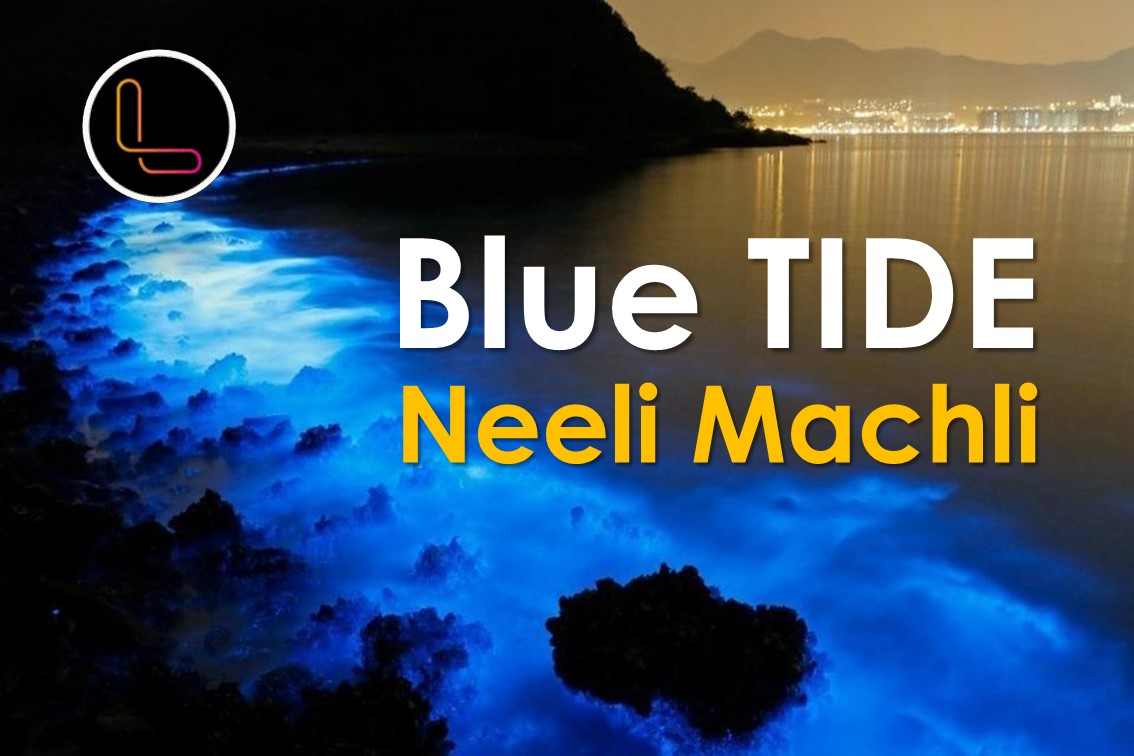
27/11/20 17:23 PM IST


What is Bioluminescence?
Bioluminescent creatures are found throughout marine habitats, from the ocean surface to the deep seafloor.
The light emitted by a bioluminescent organism is produced by energy released from chemical reactions occurring inside (or ejected by) the organism.
It is generated by an enzyme-catalyzed chemoluminescence reaction, wherein the pigment luciferin is oxidised by the enzyme luciferase.
In the ocean, bioluminescence is not as rare as you might think. In fact, most types of animals, from bacteria to sharks, include some bioluminescent members.
While the functions of bioluminescence are not known for all animals, typically bioluminescence is used to warn or evade predators), to lure or detect prey, and for communication between members of the same species.
Bioluminescence was first reported from Mumbai in November 2016 when it was spotted for two weeks. According to marine experts, light pollution in Mumbai, especially around beaches, could be a major reason for this phenomenon not being seen or reported as the glow is visible in the dark.
Why did the waves appear blue?
A bloom means that the tiny organisms are growing very quickly over a short period of time due to perfect growing conditions. During the day the algae rise to the surface to capture sunlight, with millions of the microscopic organisms present in every litre of seawater.
The phytoplankton has a brownish colour and, when so many are present, is referred to as a ‘red tide’. But once night falls, they begin to glow blue when agitated. As restrictions on beach access are lifted, people have been coming in droves to surf and swim in the luminous waves.
When it was discovered?
Bioluminescence has been an annual occurrence along the west coast since 2016 during the months of November and December. The sight was observed at Juhu and at Devgad and Velas beaches in Ratnagiri. Recently, the ‘blue tide’ was witnessed along Dakshina Kannada-Udupi coast.
While bioluminescence is not common in India, there are several tourist places across the world which are famous for the phenomenon. The Blue Grotto in Malta is one of nine caves near the island of Filfa that produces a phosphorescent glow. Similar to the Blue Grotto is Bioluminescent Bay in Puerto Rico, San Diego in California, Navarre Beach in Florida, and Toyama Bay in Japan.
Where these waves are found?
Phytoplankton thrive along coastlines and continental shelves, along the equator in the Pacific and Atlantic Oceans, and in high-latitude areas. Winds play a strong role in the distribution of phytoplankton because they drive currents that cause deep water, loaded with nutrients, to be pulled up to the surface.
These upwelling zones, including one along the equator maintained by the convergence of the easterly trade winds, and others along the western coasts of several continents, are among the most productive ocean ecosystems. By contrast, phytoplankton are scarce in remote ocean gyres due to nutrient limitations.
Dinoflagellates occur as single cells, either naked or within a cellulose cell wall, and many species use flagella to move. These organisms are sometimes classified as protozoa and algae because of their ability to photosynthesize and also absorb nutrients by being parasitic, or by ingesting organic particles. They are second to diatoms in contributing to primary production, and are widespread in the oceans, but are most abundant in nutrient-poor waters offshore. Reproduction is by cell division. Some species are bioluminescent (emitting a pale blue glow seen at night). Dinoflagellates often are the cause of red and brown tides, so named because the algal pigments give the water a colored tint.
Who found it?
The natural phenomenon is characterized by the emission of light produced by phytoplanktons (microscopic marine plants), commonly known as dinoflagellates. The light is produced through a series of chemical reactions due to luciferase (oxidative enzymes) protein, according to E Vivekanandan, consultant and scientist, Central Marine Fisheries Research Institute.
The occurrence was spotted, at Juhu Koliwada by a marine researcher and locals described the blue hue as " Neeli Machli" (blue fish). Last week, the Consul General of India in Medan, also shared photos of the natural phenomenon from the Betalbatim beach in Goa. It is assumed that this tide is traveling northwards along the west coast.
How are these waves harmful?
While smaller blooms may be harmless, slow-moving larger blooms may have an impact on deep-sea fishing. According to marine experts, the phenomenon is an indicator of climate change. Factors such as the pattern of the wind and the temperature of the ocean also determine the occurrence of bioluminescent waves.
Gurudas Nulkar, trustee of Ecology Society and professor at Symbiosis International University said, "It is a spectacle but in reality, it is an ecological indicator of degraded water quality. The phytoplankton shows up where seawater has low dissolved oxygen and high presence of Nitrogen."
Experts have said the bioluminescence could have been caused by heavy rain, fertilizers run off, discharge of sewage into the ocean.

17 Sep
'Dehradun and several other districts in Uttarakhand have experienced very heavy rainfall over the past few days, triggering landslides in multiple areas and causing rivers to swel
Read More
08 Sep
'The Rajasthan Coaching Centres (Control and Regulation) Bill, 2025, is a significant piece of legislation passed by the Rajasthan Assembly to regulate and oversee the state's burg
Read More
28 Aug
'Recently, the Indian Space Research Organisation (ISRO) successfully carried out its first Integrated Air Drop Test (IADT-1), a crucial milestone in the preparation for the countr
Read More